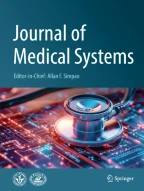Abstract
The objective is to determine the extent to which information systems (IS) for cancer are unique and necessary. Via an analysis of Medical Subject Headings used to index relevant literature and other bibliometric techniques, cancer IS are compared and contrasted with IS of other specialties. Cancer IS are relatively little discussed and primarily connect radiation equipment with the radiation oncology staff. By contrast, clinical laboratory and radiology IS are frequently discussed and connect specialized equipment to the hospital. A “Specialty Need” model accounts for these patterns and says that the “need for a specialty IS” is proportional to the “uniqueness of the specialty tools” plus the “degree to which the information from those tools is needed throughout the particular health care entity.”
Similar content being viewed by others
References
Talmon, J., and Hasman, A., Medical informatics as a discipline at the beginning of the 21st century. Methods Inf. Med. 41(1):4–7, 2002.
Hatcher, M., and Heetebry, I., Information, technology in the future of health care. J. Med. Syst. 28(6):673–688, 2004.
Menachemi, N., Burke, D. E., and Ayers, D. J., Factors affecting the adoption of telemedicine: A multiple adopter perspective. J. Med. Syst. 28(6):617–632, 2004.
Rada, R., Information Systems for Health Care Enterprises, 2nd Edition, Hypermedia Solutions Limited, Baltimore, 2003.
Enterline, J., Lenhard, R., and Blum, B., (eds.), A Clinical Information System for Oncology, Springer–Verlag, New York, 1989.
Rada, R., and Finley, S., The aging of a clinical information system. Biomed. Inform. 37(4):319–324, 2004.
Pilling, J. R., Lessons learned from a whole hospital PACS installation. Clin. Radiol. 57(9):784–788, 2002.
Pritchard, A., Statistical bibliography or bibliometrics. J. Doc. 25(4):348–349, 1969.
Garfield, E., Scientometrics Comes of Age. Curr. Contents 46:5–10, 1979.
Estabrooks, C., Winther, C., and Derksen, L., Mapping the field: A bibliometric analysis of the research utilization literature in nursing. Nurs. Res. 53(5):293–303, 2004.
Glanzel, W., and Schubert, A., A new classification scheme of science fields and subfields designed for scientometric evaluation purposes. Scientometrics 56(3):357–367, 2003.
Backus, J., Davidson, S., and Rada, R., Searching for patterns in the MeSH vocabulary. Bull. Med. Libr. Assoc. 75(3):221–227, 1987.
Rada, R., Backus, J., Giampa, T., et al. Computerized guides to journal selection. Inf. Technol. Libr. 6(3):173–184, 1987.
Wren, J., Bekeredjian, R., Stewart, J., et al. Knowledge discovery by automated identification and ranking of implicit relationships. Bioinformatics 20(3):389–398, 2004.
Hristovski, D., Peterlin, B., Mitchell, J., et al. Using literature-based discovery to identify disease candida bte genes. Int. J. Med. Inform. 74(2–4):289–298, 2004.
Marietti, C., Resource guide. Healthcare Inform. 2003:1–108, 2004.
Joch, A., New software targets cancer therapy. Healthcare Inform. 2003:78–80.
Hartel, F., and de Coronado, S., Information standards within the National Cancer Institute. In: Silva, J., Ball, M., Chute, C., et al (eds.), Cancer Informatics: Essential Technologies for Clinical Trials, Springer, New York, 2002, pp. 135–156.
Zitter, M., A new paradigm in health care delivery: Disease management. In: Todd, W., and Nash, D. (eds.), Disease Management: A Systems Approach to Improving Patient Outcomes, American Hospital Association, Chicago, 1997, pp. 1–26.
Lee, F. C., Is cancer meant to be managed? Manag. Care Cancer 3(2):28–33, 2001.
Goldberg, H., and Safran, C., Support for the cancer patient: An internet model. In: Silva, J., Ball, M., Chute, C., et al (eds.), Cancer Informatics: Essential Technologies for Clinical Trials, Springer, New York, 2002, pp. 280–293.
Garde, S., Baumgarten, B., Basu, O., et al. A meta-model of chemotherapy planning in the multi-hospital/multi-trial-center-environment of pediatric oncology. Methods Inf. Med. 43(2):171–183, 2004.
Langlotz, C., Fagan, L., Tu, S., et al. A therapy planning architecture that combines decision theory and artificial intelligence techniques. Comput. Biomed. Res. 20(3):279–303, 1987.
Briggs, B., I.T. Helps Battle ‘The Big C’. Health Data Manag. 4(5):1–4, 2004.
Wears, R. L., and Berg, M., Computer technology and clinical work: Still waiting for godot. JAMA 293(10):1261–1263, 2005.
Author information
Authors and Affiliations
Corresponding author
Rights and permissions
About this article
Cite this article
Rada, R. Characterizing Cancer Information Systems. J Med Syst 30, 153–157 (2006). https://doi.org/10.1007/s10916-005-7993-0
Received:
Accepted:
Issue Date:
DOI: https://doi.org/10.1007/s10916-005-7993-0
